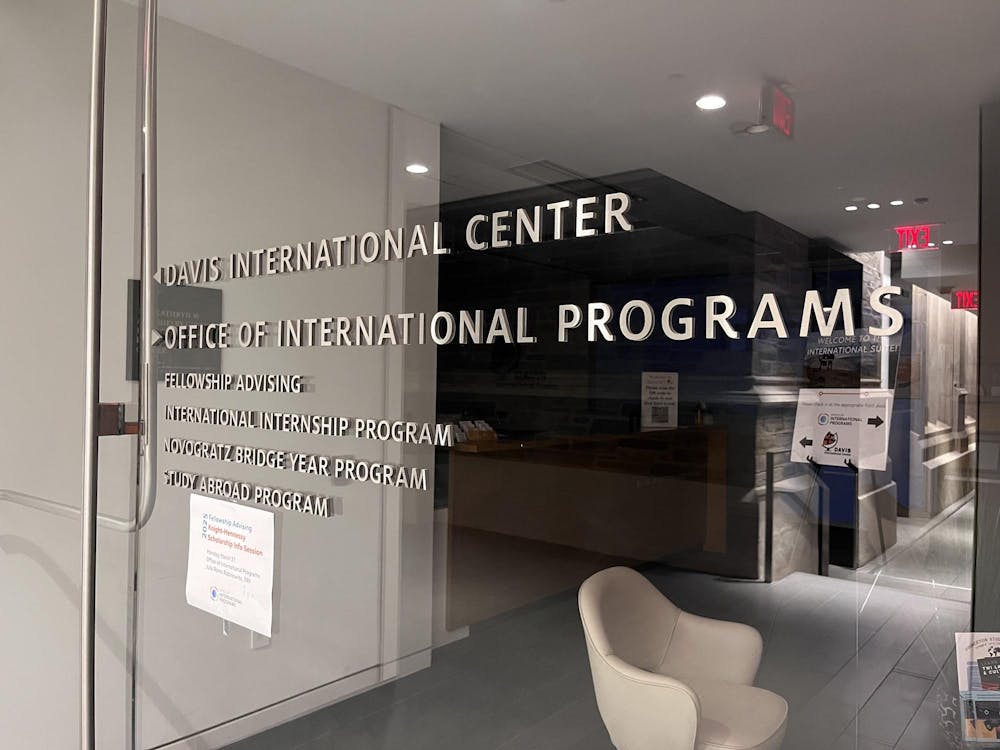After over a century in Guyot Hall, the Department of Geosciences has officially relocated to the new Briger Hall as of this fall. Some labs are already running experiments in the brand-new facilities, while others have not yet finished unpacking equipment or completed their move out of Guyot.
Since Guyot Hall’s construction in the early 1900s, the geosciences field has rapidly evolved. With subfields like geochemistry and geophysics emerging in the middle of the century, it became increasingly difficult for the Guyot facilities to keep up.
“[Guyot] has been sort of a patchwork of trying to fit new analytical spaces into a space that was not designed for that,” said Professor of Geosciences Blair Schoene in an interview with The Daily Princetonian.
Briger Hall is part of the Environmental Studies and School of Engineering and Applied Sciences (ES & SEAS) complex. As announced in April, Briger now houses the High Meadows Environmental Institute (HMEI), the departments of Ecology and Evolutionary Biology (EEB), and Geosciences.
Research labs began to move out of Guyot and into Briger in July, but most have yet to unpack and put the facilities to use. Professor of Geological and Geophysical Sciences Daniel Sigman and his research group have paused their projects as a result.
“We knew there was going to be a disruption with this move, and we had hoped it would be shorter. But we are not shocked that it’s longer,” Sigman told the ‘Prince’ in an interview. “This is how things tend to go, and we’re just doing our best to move it forward.”
Sigman explained that the moving process for the specialized instruments his lab uses requires very “sensitive and exacting conditions,” which has contributed to the delay in his research group resuming activities.
“You have to worry about many aspects of the electrical power conditions, aspects of air handling in the building, many other things like that,” he said.

On the other hand, Associate Chair of the Department of Geosciences Frederik Simons, who does not require laboratory equipment for his research as a computational theorist, described his transition to Briger as “easy,” since he only needed to move books and papers.
The one lab remaining in Guyot — the Thermal Ionization Mass Spectrometer (TIMS) Laboratory — has yet to begin packing up equipment. Led by Schoene, the lab continues to use the fully functional equipment in Guyot. While he was notified to begin the transition into Briger Hall with the other labs in July, his lab space in Briger was not ready for use.
“I didn’t believe it was gonna be ready, and it wasn’t,” Schoene told the ‘Prince.’
Despite the hindrances, faculty members are hopeful that the move to Briger will bring opportunities for increased interactions between HMEI, EEB, and Geosciences. “I encounter colleagues [in Briger Hall] that I didn’t encounter before, and that’s all really positive,” said Simons.

Sigman noted that the basement of Briger Hall includes a centralized mass spectrometry lab accessible to many different research groups for different uses, which he said has the potential to boost collaboration.
Sigman and other professors, however, expressed that they leave Guyot with bittersweet emotions.
“I will always be a little bit sad not to be in Guyot Hall,” he said. “We were a little bit more within the ebb and flow of campus life and the building itself had immense historical significance.”
Simons added, “The building in which we work for a long time has an incredible impact on our lives.”
Julie Kim is a News and Podcast contributor for the ‘Prince.’ She is from Northvale, N.J. and can be reached at julie-kim[at]princeton.edu.
Please send any corrections to corrections[at]dailyprincetonian.com.








